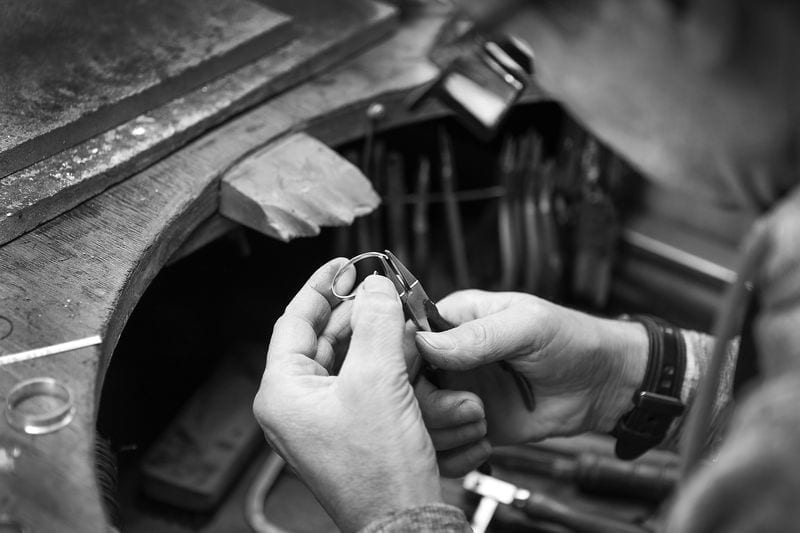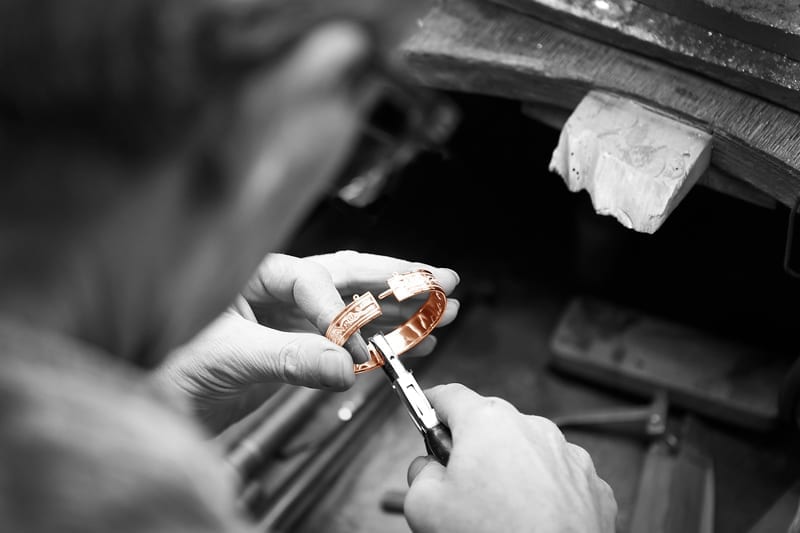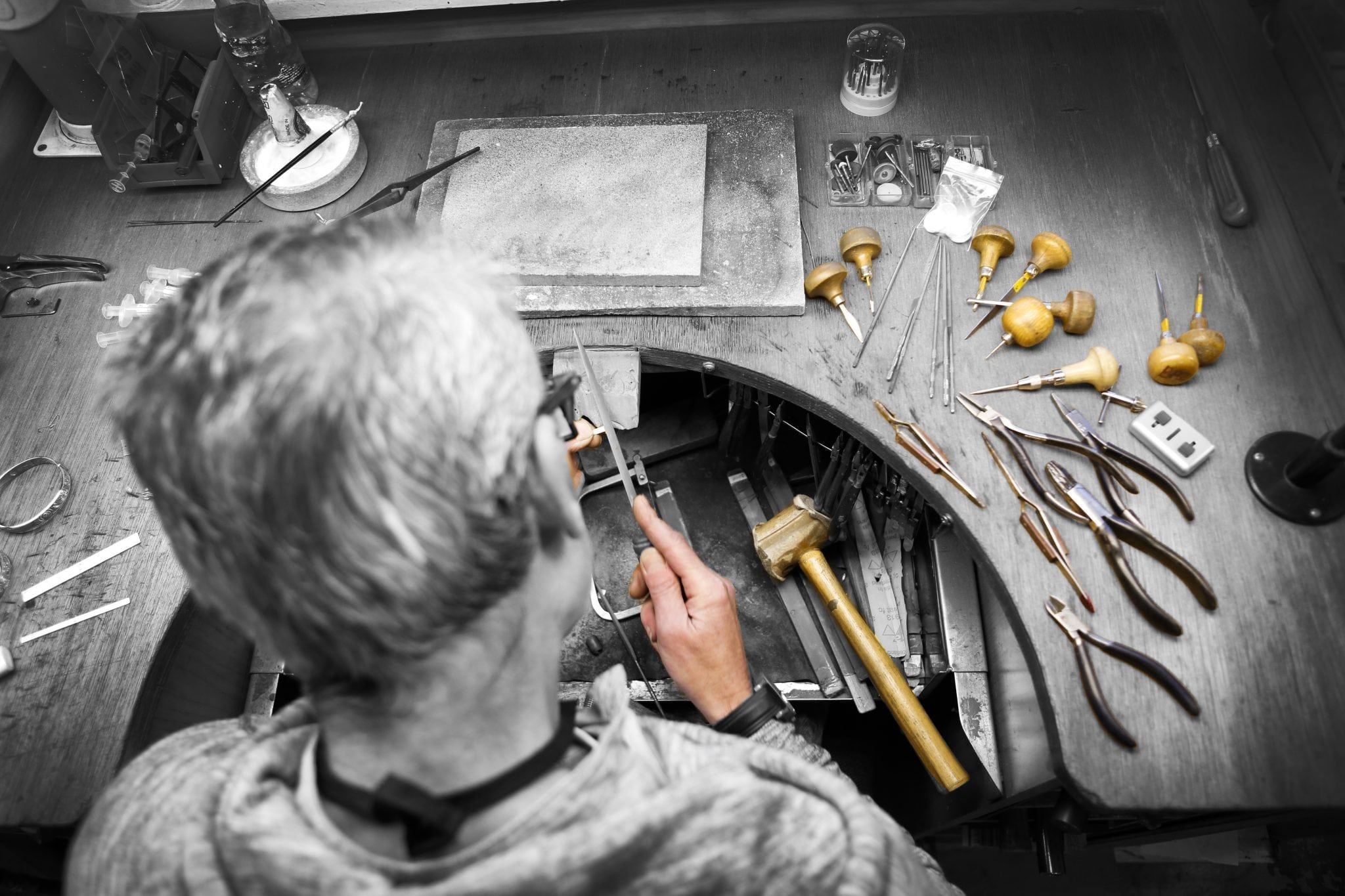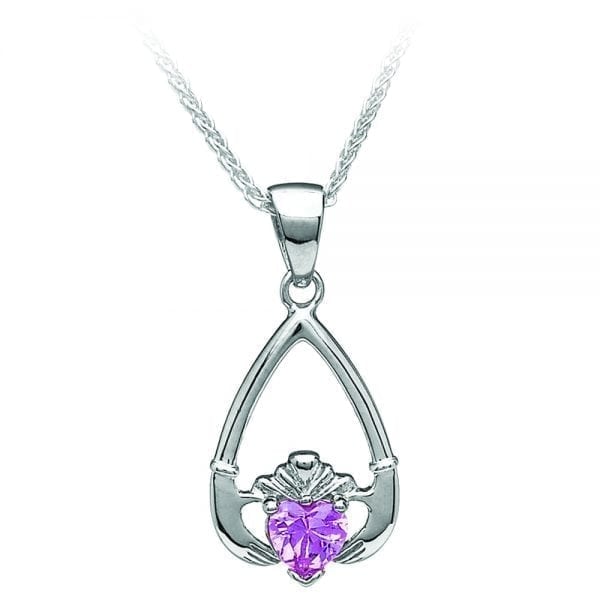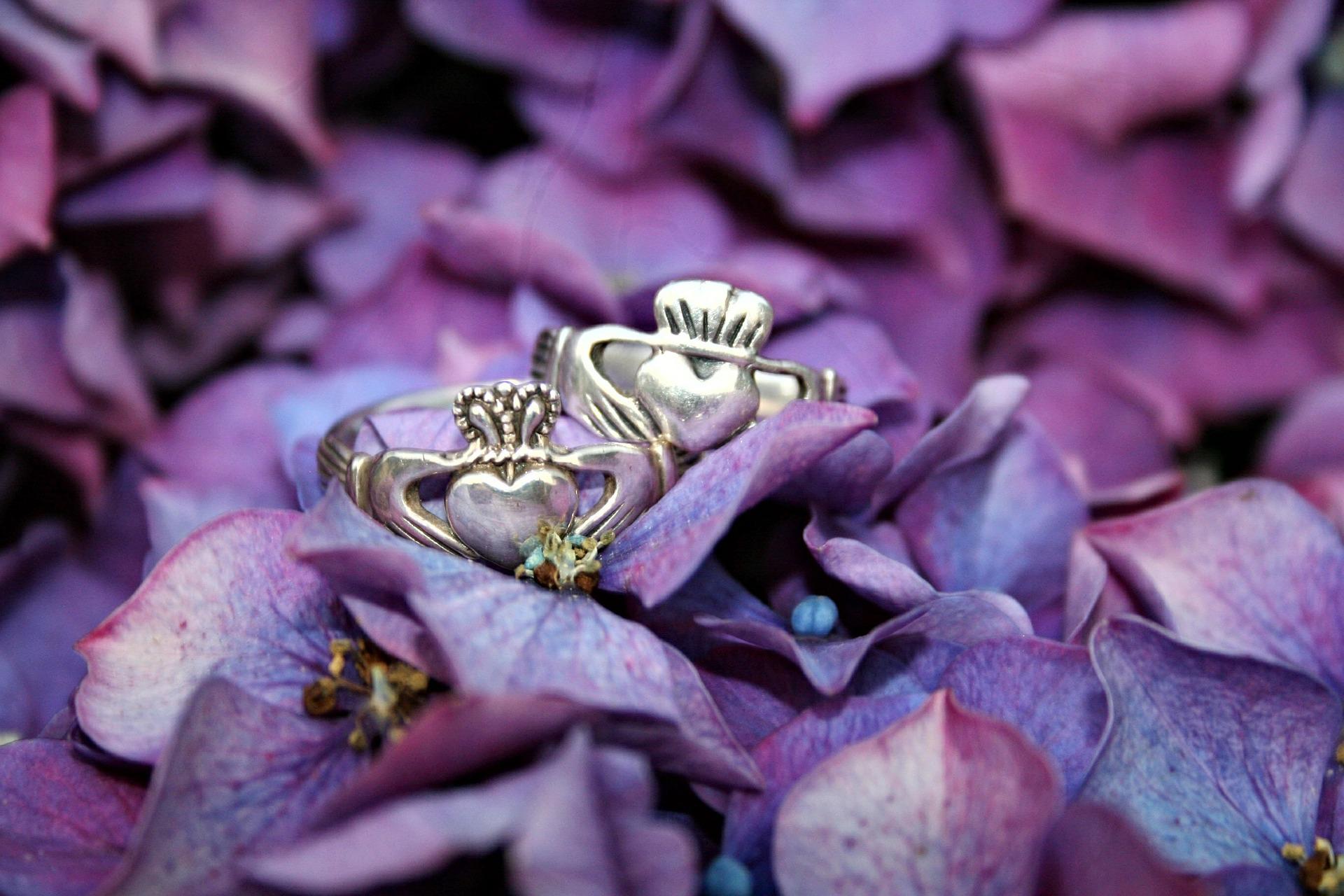
Various environmental, socioeconomic, and human rights issues depend on where and how a diamond is mined. That’s why activists prompted industry executives to improve supply chain tracing due to ethical concerns over diamond mining operations.
While some claim these improvements have significantly impacted the industry, others argue they haven’t gone far enough. In reality, the vast majority of diamonds on the market are conflict-free. However, diamond ethics entails more than just being conflict-free. Keep reading to find out more about ethical diamonds, gemstone alternatives, and how to select the perfect gem. Here’s what we’ll walk you through:
- A Closer Look at Conflict-Free Diamonds
- What Are Conflict-Free Diamonds
- The Kimberley Process
- Artisanal Mining of Diamonds
- Conflict-Free & Ethical Diamonds
- Ethical Alternatives To Diamonds
-
- Lab-Created Diamonds
- Recycled Diamonds
- Kalahari Dream Diamonds
- Canadamark Diamonds
- Conflict-Free Engagement Rings
- Gemstone Alternatives

A Closer Look at Conflict-Free Diamonds
In recent years, numerous consumers have been shifting toward eco-friendly solutions in many aspects of their lives. They’re also more concerned about the ethical standards of the companies they buy from. This also implies many jewelers are adapting their messaging to appeal to this expanding portion of the population. That, along with other reasons, has brought conflict-free diamonds into play.
A conflict-free diamond has been mined and shipped without any ties to terrorist or rebel groups. Specifically, the Kimberley Process is in place to ensure that diamonds are mined and supplied following specified ethical criteria. But that’s not all there is to conflict-free diamonds.
What Are Conflict-Free Diamonds
Before we get into the specifics of a conflict-free diamond, it’s necessary to understand what a ‘conflict diamond’ (sometimes known as a ‘blood diamond’) is. According to CNN, the World Diamond Council, which promotes the commercial diamond trade, defines these diamonds as “illegally traded to support violence in war-torn areas, primarily in central and western Africa”.
So, what exactly are conflict-free diamonds? African states had enough of the status quo by the year 2000. They gathered to devise a strategy to halt the trade of conflict diamonds. By the end, over 70 countries, the United Nations, the World Diamond Council, and the European Union, settled on the Kimberley Process — technically known as the Kimberley Process Certification Scheme — to promote ethically sourced diamonds (KPCS).
The Kimberley Process
The Kimberley Process went into effect by its member nations in 2003. This procedure tries to track diamonds from mine to market and prevent conflict diamonds from entering the global diamond market. There is, however, little monitoring and no method of knowing which mine a diamond originated from.
Diamonds may pass through dozens of hands due to the complexity of diamond trafficking, from the mine through multiple wholesalers to a diamond cutter to other wholesalers and eventually to retail. Each trader must attest the diamond parcel follows the Kimberley Process along the way.
Artisanal Mining of Diamonds
While the Kimberley Process has made it more difficult for conflict diamonds to reach Western buyers, it doesn’t ensure ethical diamonds. Artisanal mining produces about 15% of the world’s diamonds, mostly Kimberley Process-compliant.
The primary flaw of the Kimberley Process is that the definition of a conflict diamond is far too partial. The Kimberley Process Certification Scheme (KPCS) defines a conflict diamond as a “raw diamond found in an area controlled by insurgent forces whose sale is used to fuel anti-government military action.”
This is a very narrow provision. It ignores the harm done to children and adults in mining areas who are forced into labor, face abuse, and cannot pursue other sustainable sources of income. Furthermore, artisanal mining has a substantial negative impact on the ecosystem.
An estimated 1.5 million artisanal miners throughout the world are employed in this sector, and that’s how they make their living. Because diamonds are such a vital part of the economy in these rural places, a complete boycott might be impractical since it’ll wreak havoc on some of the world’s poorest community members.

Conflict-Free & Ethical Diamonds
Throughout history, powerful nations have abused the resources of weaker nations far too often. This has never been more clear than on the African continent. Communities in mining areas are now making concerted efforts to ensure they reap the full benefits of their resources and hard work.
Good jobs, educational opportunities, and health care are provided by well-conceived and well-executed “beneficiation” activities. Diamond revenues provide access to adequate healthcare to an estimated 5 million individuals worldwide.
You can be a part of these activities and help make the world a better place by buying a conflict-free diamond. By purchasing from companies that adhere to Kimberley, you can promote a safer and more ethical diamond business.
This way, you’ll also be promoting ethical miners and lawful diamond trading practices. On a smaller scale, you’re enabling tiny, conflict-free mines to make a positive impact in their local communities by creating jobs and safeguarding their place in the world.
Although picking the proper color, carat, cut, and clarity is crucial, nothing is more important than ensuring that your diamond is conflict-free. Meaning it isn’t assisting in the harm of any other people on the planet. A diamond may be valuable, but nothing is more valuable than the right to be free of fear and war crimes.

Ethical Alternatives To Diamonds
Finding conflict-free diamonds can be difficult, but there are other choices available. Consider the options below to make sure you’re selecting a stone that doesn’t violate human rights. You can find a lovely diamond or gemstone that also contributes to a better world.
Lab-Created Diamonds
Diamonds made in a lab are manufactured in carefully controlled laboratory environments utilizing advanced technological methods mimicking the conditions wherein diamonds naturally form.
Natural diamonds have the same physical, chemical, and visual properties as lab-created diamonds, including fire, scintillation, and shine. Lab-created diamonds are a great value and a better option than naturally derived diamonds since they aren’t mined.
Because the supply chain for a lab-created diamond is substantially less than a mined diamond, jewelers can charge 20-40 percent less for them than for mined diamonds of comparable quality. This means people can now wear gorgeous, ethically-sourced mined diamond substitutes they can be proud of.
Recycled Diamonds
You might also want to think about using recycled diamonds for your engagement ring. Diamonds previously owned and reintroduced into the diamond supply chain are known as recycled diamonds. There’s almost no environmental and social impact because they’re recycled rather than newly extracted. Consequently, recycled diamonds are both environmentally friendly and ethically obtained.
Some recycled diamonds have antique cuts, giving them a vintage or European look. Beautiful modern cut diamonds recut and re-polished are another type of recycled diamond.
Kalahari Dream Diamonds
The Kalahari Dream Diamond is part of the diamond industry’s global initiative to improve the lives of local communities in Southern Africa through supporting economic growth and education initiatives. It’s the first of its kind in providing the diamond’s place of origin. Moreover, a percentage of the profits directly benefit the communities where these diamonds are mined and polished.
Skilled artisans handpick and prepare each Kalahari Dream Diamond. They’re only recognized as a Kalahari Dream Diamond after thorough polishing and quality check. The Gemological Institute of America then certifies each diamond.
Canadamark Diamonds
You already know the Kimberley Mechanism doesn’t monitor diamonds from mine to market. However, diamond mines in Canada have a fully certified process to ensure each diamond is mined ethically. Canadamark diamonds have a unique serial number you may use to verify the authenticity of your diamond on their website.
However, be aware of diamonds advertised as Canadian in origin lacking the Canadamark certificate. Sometimes, it’s the seller who certifies the source of these diamonds, which may not be as reliable as the Canadamark process.

Conflict-Free Engagement Rings
Choosing a Kimberley process-certified conflict-free diamond ensures the stone isn’t linked to rebel organizations. However, we advocate taking one step further to verify your diamond is mined and supplied in the most ethical way possible.
Follow your heart and pick the diamond that better describes your love story. A conflict-free diamond for your engagement ring may be the way to go if you want your tale to include a diamond you can be proud to wear.
Gemstone Alternatives
Consider alternatives to a diamond engagement ring if your heart isn’t set on one. Many types of gemstones can be traced back to their source in gemological laboratories, but diamonds cannot. Furthermore, because colored gems travel through fewer hands than diamonds, even dealers can often tell you where they originally come from. Some of the most beautiful gemstone alternatives are emerald, sapphire, and ruby.
Don’t forget to buy from retailers involved in the entire diamond manufacturing process, from the mine to cutting and polishing to delivery of the stone to the buyer. This way, not only you’ll be supporting the Kimberley principle, but you’ll also have a unique and high-quality ring on your finger.
Finally, diamonds can only bring more light into the world if they are favoured by development. Both in terms of the beauty of the wonderful gemstone and the jobs, education and healthcare it can bring to underprivileged communities. Whether you are considering a diamond or any other gemstone, buy it responsibly and wisely.
Sources:
https://www.miadonna.com/blogs/news/truth-about-conflict-free-diamonds
https://www.cleanorigin.com/en_ca/conflict-free-diamonds/?___from_store=en_us
https://diamondsdirect.com/education/conflict-free
https://www.brilliantearth.com/conflict-diamond-facts/
https://www.whiteflash.com/conflict-free-diamonds/
https://www.longsjewelers.com/pages/kalahari-dream-diamonds
https://blog.brilliance.com/diamonds/what-does-it-mean-when-a-diamond-is-conflict-free



